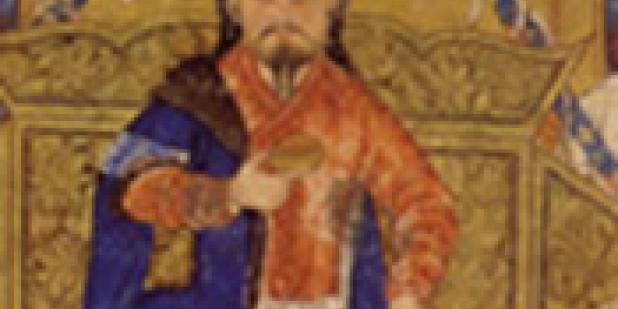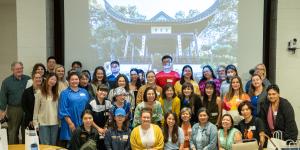On September 29, 2024, the USC U.S.-China Institute hosted a workshop at the Huntington’s Chinese garden, offering K-12 educators hands-on insights into using the garden as a teaching tool. With expert presentations, a guided tour, and new resources, the event explored how Chinese gardens' rich history and cultural significance can be integrated into classrooms. Interested in learning more? Click below for details on the workshop and upcoming programs for educators.
The Legacy of Genghis Khan
An exhibition at the LACMA of the important artistic contributions and impact the Mongol empire had on Asia, with a focus on Iran and China.
Where

At the time of his death in 1227, Genghis Khan had unified the Mongol people, organized a nearly invincible army of fearless nomadic warriors, and set into motion the first stage in the conquest of an enormous territory that would be completed by his sons and grandsons. With extraordinary speed and devastating ruthlessness the Mongols created the world’s largest empire, stretching at its greatest extent from Korea to Hungary. But the legacy of Genghis Khan extends well beyond the battlefield. The Mongols’ promotion of pan-Asian trade, their avid taste for luxury goods, and their practice of relocating artists combined to produce an unprecedented cross-fertilization of artistic ideas throughout Eurasia.
This exhibition examines the important artistic and cultural achievements that occurred in the Iranian world in the aftermath of the Mongol invasions. It was a period of brilliant cultural flowering as the Mongol masters sought to govern their disparate empire, and in the process they sponsored the creation of a remarkable new visual language. By uniting eastern and western Asia for over a century, the Mongols produced a unique occasion for cultural exchange that forever changed the face of art in Iran, making it a focal point of innovation and synthesis for the next three hundred years. As the lively manuscript illustrations, opulent decorative arts, and splendid architectural elements assembled for this exhibition all reveal, this too was Genghis Khan’s legacy.
Featured Articles
Happy Lunar New Year from the USC US-China Institute!
Events
Ying Zhu looks at new developments for Chinese and global streaming services.
David Zweig examines China's talent recruitment efforts, particularly towards those scientists and engineers who left China for further study. U.S. universities, labs and companies have long brought in talent from China. Are such people still welcome?






